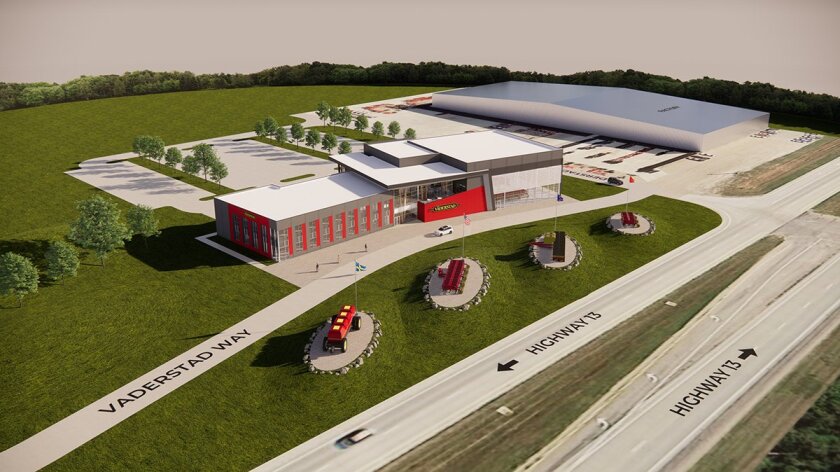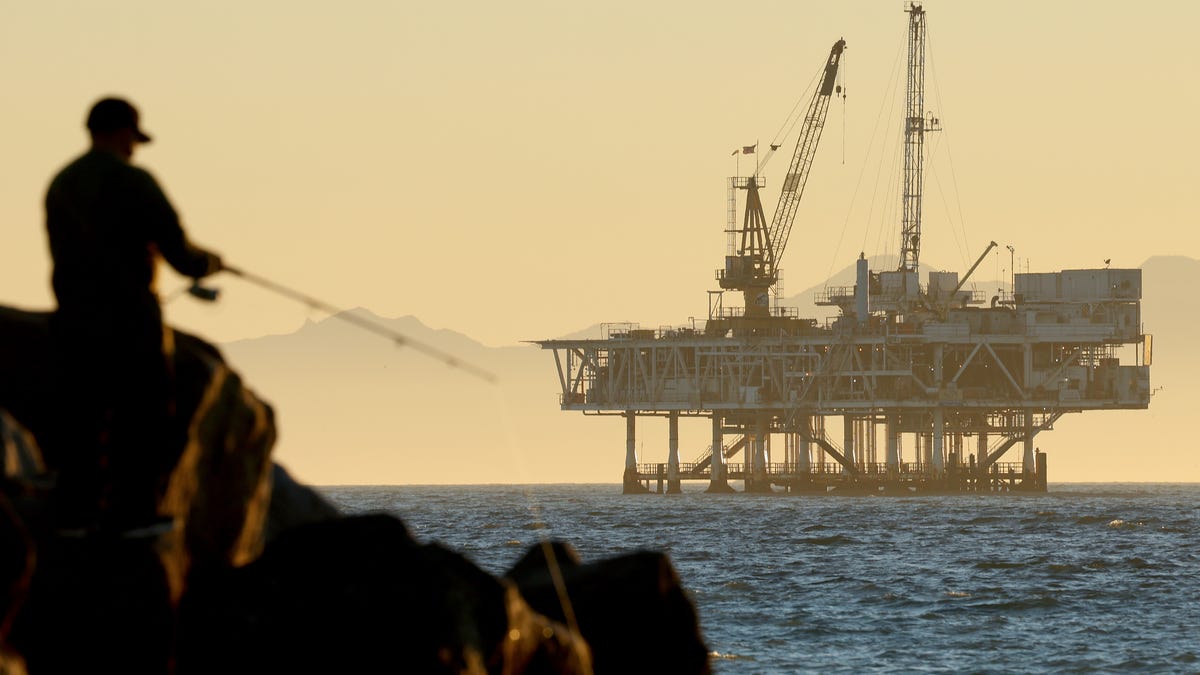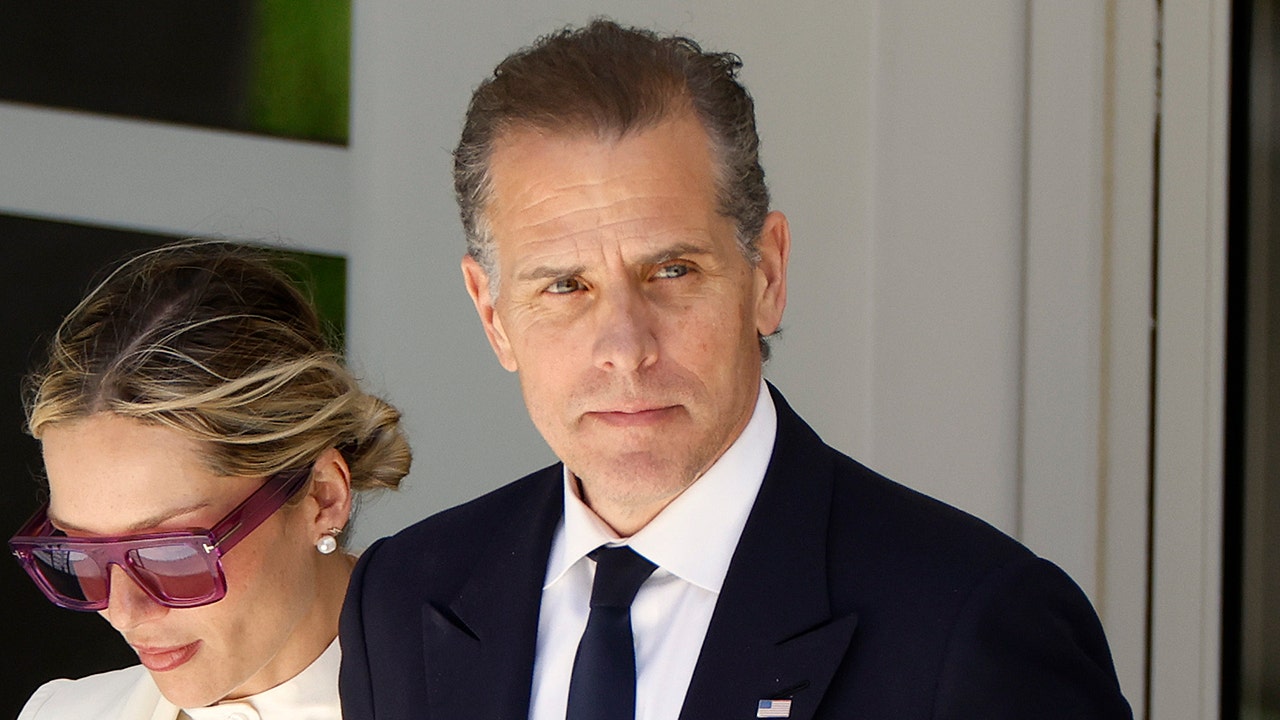North Dakota
Natural gas pipeline to benefit North Dakota ag and businesses

WAHPETON, N.D. — A natural gas pipeline extension in southeast North Dakota will bring additional supply to agribusinesses at Wahpeton and create an opportunity for farms and grain handling facilities to add natural gas service.
WBI Energy has secured a federal permit to build the pipeline from Mapleton, North Dakota, where it has a natural gas compressor station, about 60 miles south to Wahpeton.
The company plans to start construction in spring 2024 and be operational by the end of 2024, according to Laura Lueder, manager of communications and public relations.
The pipeline will for the first time provide natural gas service to the town of Kindred, North Dakota, and have a distribution station at Wahpeton.
Wahpeton has had natural gas service but not enough capacity to provide uninterrupted service, said Chris DeVries, the community development director for Wahpeton.
“The new pipeline will allow bigger users, more users and will basically guarantee an uninterruptible service,” DeVries said. Those interruptions usually come during winter cold snaps with peak demand for heat.
“Some of our businesses right now have to have breaks where they’re not receiving gas,” he said.

Contributed / Väderstad
He said one business that will benefit is the
Vaderstad farm equipment manufacturer that is expanding
just west of Wahpeton.
And it should help recruit new businesses. “We don’t have to worry about telling somebody ‘no’ if they want to come into Wahpeton,” DeVries said.
The
Minn-Dak Farmers Co-op
has its sugarbeet processing facility at Wahpeton, and Cargill has a corn processing plant there.
While Lueder declined to comment on specific customers, Minn-Dak and Cargill both filed letters of support for the project with the Federal Energy Regulatory Commission, which approved the project in October.
The line also provides the opportunity for “farm taps,” where farms or agribusinesses could tap into the line to use natural gas for drying grain or other purposes.
Lueder said the first step for a possible farm tap would be to contact Montana-Dakota Utilities Co., which will provide the distribution.
Adam Spelhaug farms at Kindred and serves on the Kindred City Council. While his farm won’t be close enough to the line to tap into it, he said it will benefit the region.
“They have some opportunities with people that aren’t too far away from the projected line that they could access into it to run their grain dryers and things like that,” Spelhaug said, and at “not too bad of a price.”
Property owners would not have to add a tank like they do for propane or could get rid of the tanks they have now.
It could also benefit housing development in Kindred, with just under 1,000 people, and Wahpeton, with about 8,000 people.
“As we look to expand, there’s going to be less that developers have to worry about, … give them more options,” DeVries said.
The construction of the line will also benefit the area, he said.
“Probably next summer, we’ll start seeing a lot of activity around the area,” he said. “That kind of economic development activity in our area is going to be good as well.”
Farmers interested in tapping into the line can email Jayden Veil, industrial services manager at Montana-Dakota Utilities Co., at Jayden.Veil@MDU.com.
Reach Agweek reporter Jeff Beach at jbeach@agweek.com or call 701-451-5651.

North Dakota
Supreme Court upholds North Dakota’s majority-Native legislative subdistricts • North Dakota Monitor

The U.S. Supreme Court settled a North Dakota voting rights case Monday, leaving in place two majority-Native American subdistricts challenged as unconstitutional.
“I’m glad that it’s finally been resolved,” said Rep. Lisa Finley-DeVille, a citizen of the Mandan, Hidatsa and Arikara Nation who represents one of the subdistricts. “It’s very important that we’re able to represent our needs at the table.”
The lawsuit, brought by two non-Native North Dakota residents, alleged that the subdistricts are racial gerrymanders — meaning the Legislature established them based predominantly on the racial makeup of their communities, rather than looking at other criteria like geography, population size or the political interests of residents. The plaintiffs argued the Legislature relied heavily on anecdotal evidence, not legitimate research, when it created the districts.
The plaintiffs claimed the subdistricts violate the Equal Protection Clause of the 14th Amendment by strengthening the voting power of Native American residents at the expense of constituents who aren’t Native American.
Native Americans gain representation in North Dakota Legislature as Republicans keep supermajority
The Legislature established the two subdistricts in 2021. District 4A follows the boundaries of the Fort Berthold Reservation, while District 9A includes the Turtle Mountain Reservation and some surrounding communities.
A three-judge district court panel found in 2023 that the map was constitutional.
The panel wrote that even if the Legislature did look to race when making the map, federal courts have previously found that states may consider race in a “narrowly tailored” capacity when drawing district lines to comply with the Voting Rights Act.
Unsatisfied with that decision, the plaintiffs asked the U.S. Supreme Court to send the lawsuit back to a lower court for further proceedings, or to accept the case.
The high court on Monday dismissed the appeal of District 9A and affirmed the district court’s decision on District 4A. The court did not explain its reasoning.
Robert Harms, an attorney representing the plaintiffs, called the decision disappointing.
“The troubling aspect of this whole case is that the North Dakota Legislature didn’t have in front of it any statistical analysis,” he said Monday.
The lawsuit was filed by Charles Walen and Paul Henderson, both of whom are former district chairs for the North Dakota Republican Party, Harms said. Walen last year successfully ran as a Republican for a District 4 state Senate seat.
The boundaries of District 9A and District 9B changed for the 2024 election after a federal judge imposed a new map following a separate voting rights lawsuit brought by the Turtle Mountain Band of Chippewa.
The MHA Nation, Finley-DeVille and MHA citizen Cesar Alvarez joined Walen and Henderson’s lawsuit on the side of the state, arguing that the Legislature had gathered sufficient evidence to warrant the creation of the subdistricts.
That included testimony from tribal representatives, information about the use of subdistricts for Native American reservations in South Dakota and previous redistricting litigation, according to a brief filed by the MHA Nation, Finley-DeVille and Alvarez.
MHA Chairman Mark Fox testified during the redistricting process that candidates favored by Native residents of District 4 had been repeatedly defeated by the district’s white majority.
The plaintiffs disagreed. In one response, they argued that even before the subdistricts were created, voters in District 4 and District 9 were able to elect Native lawmakers to the Legislature, and that therefore the subdistricts are not necessary. The brief cites Rep. Dawn Charging and Sen. Richard Marcellais as two Indigenous lawmakers elected in District 4 and District 9, respectively.
The U.S. Department of Justice in a December brief advised the Supreme Court against considering the case.
In an unusual move, North Dakota came out against the district court’s ruling, despite that the court had ruled in the state’s favor. In a memo filed this spring, the state said that the Legislature did not rely on race as a predominant factor in the redistricting process, and that the district court was wrong to rule that such behavior would be permissible in any circumstance. The state asked the Supreme Court to send the case back to district court for further proceedings.
“We said before and we maintain now that race was not the predominant motivator for the redistricting,” North Dakota Attorney General Drew Wrigley said Monday.
The Supreme Court has taken up two other voting rights cases challenging a majority-Black district in Louisiana as racial gerrymandering.
In a 2023 voting rights case, Allen v. Milligan, the U.S. Supreme Court ruled 5-4 that Alabama had violated the Voting Rights Act when it created only one majority-Black district, finding that this unlawfully weakened the power of Black voters in the state.
YOU MAKE OUR WORK POSSIBLE.
GET THE MORNING HEADLINES.
North Dakota
Fargo insurance agent fined by state disputes giving kickbacks

BISMARCK — A Fargo insurance agent facing the largest fine ever imposed by the North Dakota Insurance Department says the state agency misrepresented what led to the fine.
Tyler Bjerke, a representative for Midwest Heritage Insurance and Valley Crop Insurance, has been fined $136,500 and his license to sell insurance in North Dakota has been placed on probation for four years for violating a law that limits gifts to clients and potential clients, according to the order finalizing the penalties.
The per person limit means insurance agents can give a gift of $200 to a client couple, said Insurance Department spokesperson Jacob Just.
The Insurance Department said Bjerke gave 182 pub-style tables to clients and potential clients valued at $213.95.
Bjerke doesn’t dispute the cost but contends that he originally ordered the tables from China in July 2022 at a price of $199.95 per set. He said in September 2022, he was told that the price had gone up to $213.95 due to port fees and tariffs.
He said he tried to cancel the order but would have lost a $20,000 deposit.
“I made a business decision based on $14.95 over the gift allowance and thought that no one would care about $14.95,” he said in the email. “This was $2,720.90 over the limit and I was fined $136,500, $750 per violation.”
Insurance Commissioner Jon Godfread said in a statement that licensed insurance agents aren’t allowed to give high-value gifts to consumers “because it essentially boils down to bribing clients for business.”
“Insurance should only be sold based on the competitive coverage options and premiums offered by an agent, not by those who can offer kickbacks in exchange for business,” Godfread said.
Bjerke said the pub tables were for clients with “man-caves, shops, lake homes, etc.” as a way to thank clients he considers family members.
“For the insurance commissioner to mention that gifts are kickbacks in exchange for business is a gross misrepresentation of what occurred,” Bjerke said.
The Insurance Department also found that Bjerke hosted a concert by the band Sawyer Brown in February 2023 with free admission to clients and potential clients, with the value also exceeding the $100 limit. Prosecution of that case was deferred as a condition of Bjerke’s license being placed on probation.
Bjerke said the band was booked as part of a company and client celebration after a day of training sessions that included updates from the U.S. Department of Agriculture, which administers crop insurance programs, and U.S. Sen. John Hoeven, R-N.D., a crop insurance advocate. He said there were no tickets to the event.
Bjerke said he tried multiple times to meet with the Insurance Department and complied with their request for four years of company records.
He said the Insurance Department has a vital role to play in creating an equal playing field for North Dakota insurance agents, but he said he believes his agency was targeted.
Jeff Kleven, executive director of Independent Insurance Agents of North Dakota, said these kinds of violations should be taken seriously and can hurt the reputation of the industry.
Kleven said every licensed insurance agent is aware of the rules on gifts.
“It’s part of the test,” he said.
This story was originally published on NorthDakotaMonitor.com
______________________________________________________
This story was written by one of our partner news agencies. Forum Communications Company uses content from agencies such as Reuters, Kaiser Health News, Tribune News Service and others to provide a wider range of news to our readers. Learn more about the news services FCC uses here.
North Dakota
Obituary for Delmar Zimmerman at Feist Funeral Home

-

 Politics1 week ago
Politics1 week agoWho Are the Recipients of the Presidential Medal of Freedom?
-

 Health1 week ago
Health1 week agoOzempic ‘microdosing’ is the new weight-loss trend: Should you try it?
-
/cdn.vox-cdn.com/uploads/chorus_asset/file/25822586/STK169_ZUCKERBERG_MAGA_STKS491_CVIRGINIA_A.jpg)
/cdn.vox-cdn.com/uploads/chorus_asset/file/25822586/STK169_ZUCKERBERG_MAGA_STKS491_CVIRGINIA_A.jpg) Technology5 days ago
Technology5 days agoMeta is highlighting a splintering global approach to online speech
-

 Science2 days ago
Science2 days agoMetro will offer free rides in L.A. through Sunday due to fires
-

 News1 week ago
News1 week agoSeeking to heal the country, Jimmy Carter pardoned men who evaded the Vietnam War draft
-
/cdn.vox-cdn.com/uploads/chorus_asset/file/25821992/videoframe_720397.png)
/cdn.vox-cdn.com/uploads/chorus_asset/file/25821992/videoframe_720397.png) Technology6 days ago
Technology6 days agoLas Vegas police release ChatGPT logs from the suspect in the Cybertruck explosion
-

 Movie Reviews7 days ago
Movie Reviews7 days ago‘How to Make Millions Before Grandma Dies’ Review: Thai Oscar Entry Is a Disarmingly Sentimental Tear-Jerker
-

 News1 week ago
News1 week agoTrump Has Reeled in More Than $200 Million Since Election Day


















